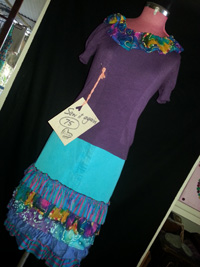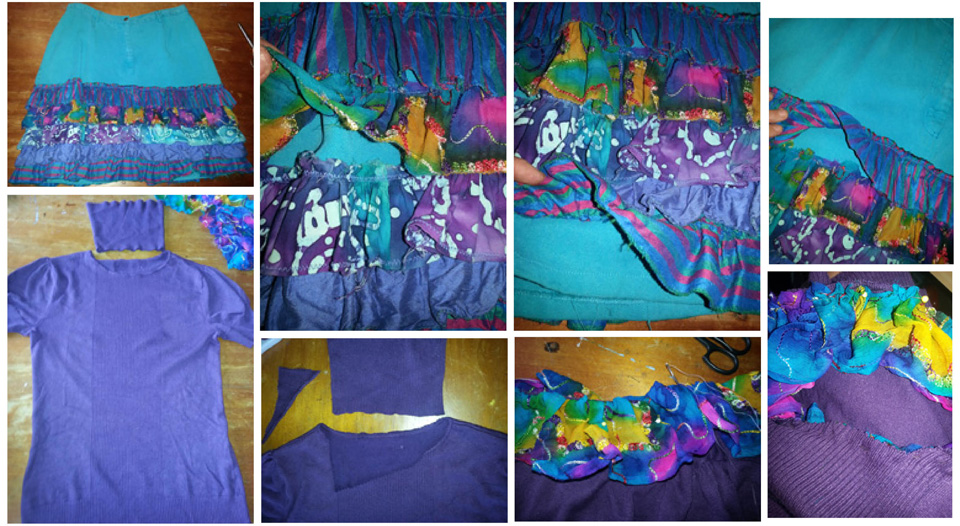
A plain, serviceable top and skirt can be revived by adding silk frills – five rows to the skirt and one to secure the altered neckline of the top.
I’m excited today to have the opportunity to attend a talk by Western Australia’s most famous botanic artist Philippa Nikulinsky who has dedicated 50 years to her craft as an illustrator of natural history specialising in plants from harsh environments. The colour and attention to detail in her work is superb.
Philippa’s story began back in the Kalgoorlie goldfields where she was born and continued through a wonderful partnership with her husband Alex and their creative children and grandchildren, some of whom I had the pleasure to meet yesterday.
Hearing other people tell their story helps crystallise your own – particularly when there are shared values of integrity, creativity, autonomy and purpose involved.
These are the values I’m applying to my Sew it Again project this year as I’ve committed to demonstrating how we can reuse and upcycle existing clothing instead of always buying new, as we have been conditioned to do by consumption-driven western culture.
Today’s outfit was two op shop garments bought separately, both made from plant fibres. I cropped the skirt to knee-length then added five rows of frills working from the bottom up. The frills were made with 4cm wide pieces of silk salvaged from garments that weren’t working for various reasons. I reused existing hems where possible or just zigzagged to neaten before using a gathering thread to form the frill, then pin and sew in place. The top had a polo-neck which I removed and recreated an irregular scooped neck, to which I attached another frill, machine-sewn to the neck with insides facing. The frill then flops over the cut edge and is just roughly hand-stitched to secure in front.

The colors are gorgeous. Reminds me of opals.